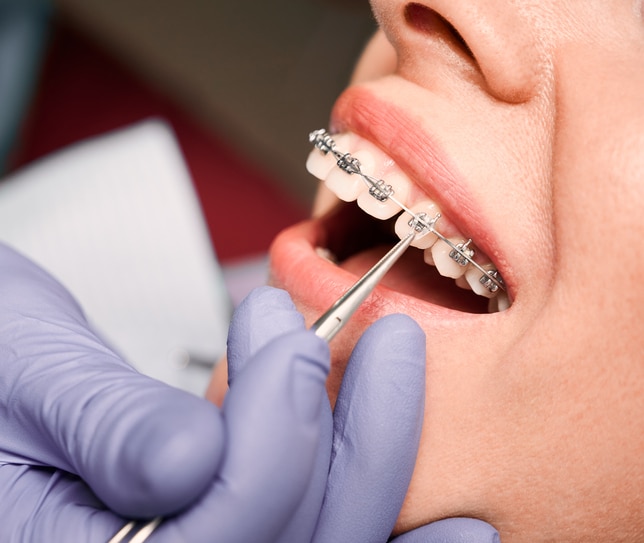Your Overview to Cumming Invisalign: Straightening Teeth with Style and Convenience
Wiki Article
Comprehensive Guide to Orthodontics Procedures for Remedying Dental Misalignments
In the realm of orthodontics, the trip to accomplishing a flawlessly lined up smile involves a myriad of treatments customized to deal with dental imbalances. From traditional braces to unnoticeable aligners and also medical choices, the field of orthodontics offers an array of remedies to attend to varying levels of dental abnormalities. Comprehending the ins and outs of each procedure, including their systems, benefits, and possible drawbacks, is vital in making educated decisions concerning one's orthodontic treatment. As we browse via the detailed overview to orthodontic procedures for correcting oral imbalances, the elaborate information of each method will unfold, clarifying the path towards a unified and useful dental positioning.Orthodontic Procedures Overview

Along with traditional braces and clear aligners, orthodontists might likewise advise other treatments like headwear, palatal expanders, or retainers to deal with certain positioning issues (invisalign). These procedures are tailored per client's special demands and may involve a mix of therapies to attain the preferred results. Normal modifications and surveillance are crucial parts of orthodontic treatment to ensure progress is on track and to make any kind of necessary adjustments along the road. By going through orthodontic procedures, clients can not only accomplish a straighter smile but also improve their overall dental wellness and feature.
Traditional Dental Braces: Just How They Function
When thinking about orthodontic treatments for dental misalignments, standard dental braces attract attention as a reliable approach for fixing teeth placing. Traditional dental braces consist of brackets, wires, and bands that collaborate to use continuous pressure on the teeth, progressively relocating them into the wanted alignment. The braces are affixed to the teeth making use of a special adhesive, and the wires are threaded through the braces. By changing the tension of the wires, orthodontists can regulate the instructions and pressure related to each tooth, assisting them right into proper alignment gradually.
As pressure is applied to the teeth with the braces, the bone bordering the teeth is improved to sustain the brand-new tooth placements. People will certainly need routine modifications at the orthodontist's office to ensure the braces proceed to use the proper pressure for effective teeth movement.
Undetectable Aligners: Advantages And Disadvantages
These clear, custom-made trays are basically undetectable when worn, making them an enticing choice for people seeking a more visually pleasing orthodontic treatment. Individuals can remove the aligners prior to eating or cleaning their teeth, reducing the danger of food obtaining stuck in the home appliance and streamlining the cleaning procedure.
Surgical Orthodontic Options
Surgical treatments in orthodontics existing sensible alternatives for dental network resolving intricate oral misalignments that may not be efficiently fixed with traditional orthodontic treatments. While conventional braces and unnoticeable aligners can correct several orthodontic problems, particular situations need surgical treatment to accomplish ideal results. Surgical orthodontic alternatives are typically advised for extreme malocclusions, considerable jaw inconsistencies, and cases where the underlying bone framework requires adjustment to achieve correct positioning.One common medical orthodontic treatment is orthognathic surgery, which entails rearranging the jaws to fix functional problems such as difficulty eating or speaking. This surgical procedure is commonly carried out in cooperation with an orthodontist who aids line up the teeth prior to and after the procedure. Surgical orthodontics might also entail procedures to reveal impacted teeth, get rid of excess gum cells, or reshape the jawbone to produce a much more unified face profile.
Prior to considering medical orthodontic alternatives, clients undergo a detailed evaluation to figure out the necessity and possible benefits of such interventions. orthodontics. While surgical treatment might seem overwhelming, it can significantly enhance both the feature and aesthetics of the smile in situations where conventional orthodontic treatments drop short
Retainers and Post-Treatment Treatment

Post-treatment treatment involves following the orthodontist's directions faithfully. This might include proper oral hygiene methods, going to follow-up visits, and using the retainers as suggested. Failing to abide with post-treatment treatment instructions can result in regression, where the teeth slowly return in the direction of their initial settings. Constant retainer wear, great oral hygiene, and routine dental examinations are necessary for keeping the outcomes attained via orthodontic surgical procedure and ensuring the long-term stability of the corrected dental placement.
Conclusion
In final thought, orthodontic procedures use different options for correcting oral misalignments. Surgical orthodontic options are offered for much more extreme imbalances. Overall, orthodontic procedures can efficiently improve dental wellness and visual look.As we browse through the comprehensive overview to orthodontic treatments for fixing oral imbalances, the complex details of each method will certainly unfold, shedding light on the course toward a functional and harmonious dental positioning. - cumming invisalign
One of the most common orthodontic treatments is other the usage of dental braces, which are composed of metal brackets and wires that apply gentle stress to slowly change teeth right into the wanted position.When considering orthodontic treatments for dental misalignments, standard dental braces stand out as a reliable approach for dealing with teeth placing. Additionally, invisible aligners may not be suitable for complex orthodontic issues that require more significant teeth motion, as they are commonly advised for light to modest instances. Retainers are custom-made orthodontic gadgets created to hold teeth in their dealt with placements after the conclusion of orthodontic therapy.
Report this wiki page